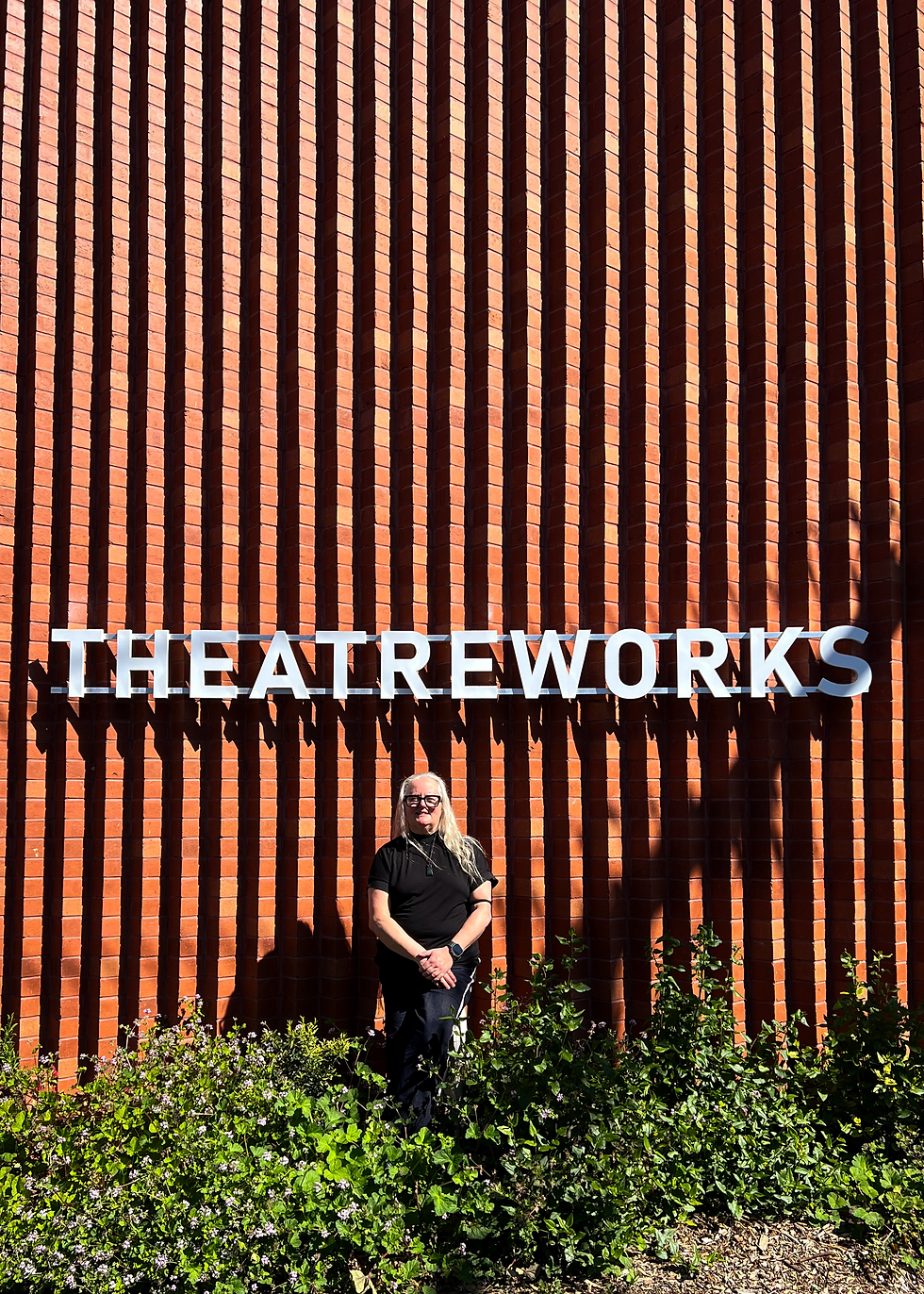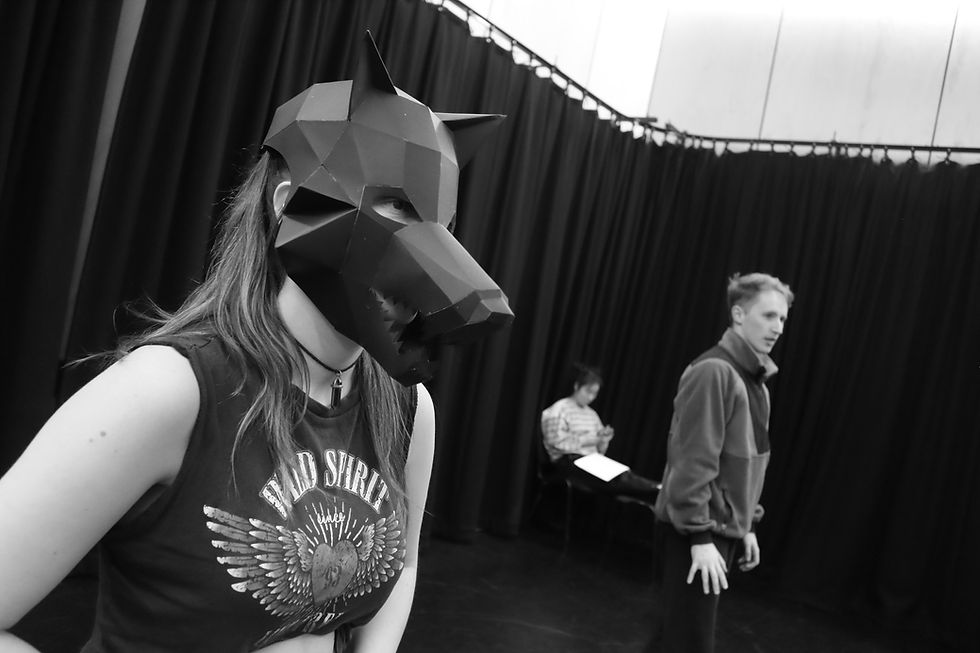In Conversation With Rodrigo Calderón
- georginalucyarchib
- Apr 16, 2024
- 3 min read
''Switching back and forth between my Spanish and English brain in the rehearsal space has been a deliciously creative process, but also a mindf***." In today's backstage blog we catch up with director, writer and performer Rodrigo Calderón who reflects on his experience creating a bilingual season of 'He', a bold coming-of age "...about a man, men, love and memory." Playing at Explosives Factory 7 - 18 May, shows available in both English and Spanish.
Q: Without revealing too much, what is HE about?
A: HE is about a man who returns to a place he swore never to return to: his childhood home, a post-civil war coastal town he fled twenty years ago. The story shows us the struggles of this man trying to reconcile with his past, deliriously searching for closure. HE is about a man, men, love, and memory. A story about sex, sin, and of course, the ocean.
Q: Can you tell us about the experience of producing a show that is performed in both English and Spanish?
A: Well, I didn’t realise I was making two completely different shows! It’s hard work. Switching back and forth between my Spanish and English brain in the rehearsal space has been a deliciously creative process, but also a mindfuck. The tonality of my performance in Spanish informs a playfulness I was underusing in my English performance of the text, whilst there was a starkness in my performance in English that I was underusing in my Spanish performance. Sounds tricky, but this is the daily struggle of bilingual people. You try to convey meaning to others by translating your thoughts and in the process, the phrases change, the imagery, and at the end, your identity.
Making a bilingual season of this show was a natural process. The response of the Spanish-speaking community has been fantastic. And I hope this encourages more theatre practitioners to bring the full flair of their accents and their native tongues to main stages, and with their accents and their languages, their communities.
Q: What has it been like wearing the hat of writer and performer?
A: A beautiful condemnation. I’m also the director, which gives me creative control to make any changes as I please. Finding the limits of this possibility has been an interesting exploration. When do you stop editing? Jorge Luis Borges used to say, ‘The only reason I publish my work, it’s so I stop doing edits.’
When I wrote this new version, my writer-pen was contaminated with knowledge I didn’t have on the first draft and I forgot that this particular work was created through mistakes I made by exploring the words on the floor. It was a physical process more than a mental one. It was fun to go back to the genesis, playing with the words on the floor, changing languages in the middle, deleting whole sections on the script, trying new things, and finally letting go, allowing the work itself to do the talking.
This new process was supported by mentorships I received from the ‘Pathways’ playwriting program that La Mama Theatre in 2023, and specifically the personal mentorship with Jorgelina Cerritos, a Salvadoran playwright and the winner of the prestigious award Casa de las Americas.
Q: How would you describe your work's aesthetic?
A: I’ll start by quoting what Grotowsky said in 1980, in a conference in Chicago, ‘…it is difficult to differentiate between techniques and aesthetic.’ I think I’m still in search of one. My theatrical investigations start by searching archetypal imagery through impulses in the body and what the audience experience is the result of this continuous exploration. My work is informed by the constant psycho-physical study on the Suzuki Method for Actor’s training, Meyerhold Biomechanics, and Asian shamanistic trance practices.
A great director and playwright told me once, ‘The actor searches for the action, the writer provides it.’ My text is specific for the work I’ve created, which means it serves the rhythm of my performance. Finding the physicality in the text was an investigation of transforming personal imagery into universal one, which later I realised the deeper I went with the personal the more universal it became.
Q: If you could invite anyone to come and watch the show, who would it be?
A: If I could bring some of them back from the dead… Bernard Marie-Koltès, Antonin Artaud, Yoshi Oida, A. Jodorowsky, Camus, Mike Amigorena, The Pope, Susan Sontang, Sarah Kane, Sergi Belbel, Edgardo Dib, Euripides, Dennis Lavant, Leos Carax, Thomas Ostermeier, Meilia Padma, Rianto, Sidi Larbi C. , Dimitris P. , E. Lauren, Mattia Sebastian, Vsevolod Meyerhold, Pavlovich Chekhov, Vakhtangov, Lars Eidinger, E. Laskaridis, Yumiko Yoshioka, HIjikata, Ismaera, Baudelaire, M. Kartun, Patricia Cornelius, Jerzy & Eugenio, Roberta Carreri, Ryzard Cieslak, Iben Nagel, Michael Strecker, Heiner Müller, Mas Agus, Mas Wayan, Valentin Abuaf, San Monseñor Romero de América, James Baldwin, Roque Dalton, Federico Garcia Lorca, Jon Fosse, my grandfathers, just to name a few.






Comments